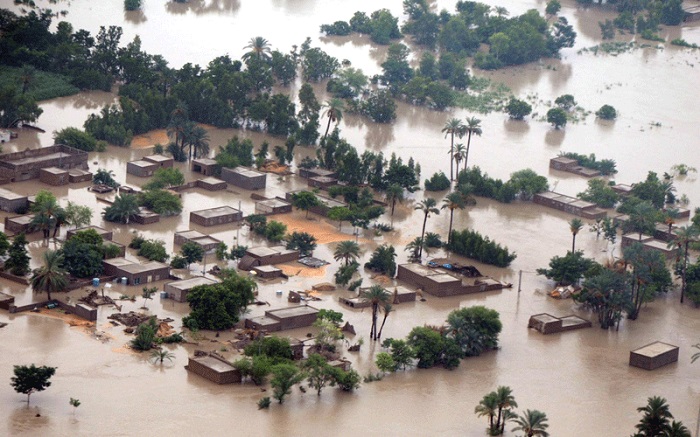In several areas, including eight in Sindh, two in Balochistan, and one in Punjab, flooding is rising, according to a preliminary assessment by the UN Satellite Centre.
The satellite data from September 8–14 and September 15–21 were compared in the report issued by the UN Office for the Coordination of Humanitarian Assistance (OCHA) on Sunday.
According to the most recent data, water levels in the Sindhi districts of Jamshoro, Malir Karachi, Thatta, Tando Allahyar, Mirpurkhas, Umer Kot, Tharparkar, and Sujawal, as well as the Baloch districts of Gwadar and Lasbela and one in Punjab, have increased from a week ago.
In contrast, it appears that floodwaters are subsiding or stagnating in other regions of the nation.
Standing floodwaters, among other effects, led to an uptick in waterborne illnesses, unhygienic conditions, and growing malnutrition in the flood-affected areas, according to OCHA. The impacted population, whether they are displaced or not, will need assistance getting ready for the impending cold season, the report added.
Typhoid, malaria, and diarrhea cases are on the rise as a result of the large number of people living in squalid temporary shelters with no access to even basic services. Parts of Balochistan and Sindh have reported the first cases of waterborne and vector-borne disease outbreaks.
In an update on Sunday, the National Flood Response Coordination Centre (NFRCC) said that 23 districts of the country had so far been declared worst affected due to floods.
“Besides, a total of 13,074 kilometres of roads and 392 bridges have been damaged across the country by the calamity. More than 300 medical camps have been established in the country in which more than 566,089 patients have been treated,” the NFRCC said.
In Sindh, the data said, the worst-affected districts were Qambar-Shahdadkot, Jacobabad, Larkana, Khairpur, Dadu, Naushehro Feroz, Thatta and Badin.
In Balochistan, Quetta, Nasirabad, Jafferabad, Jhal Magsi, Bolan, Sohbatpur and Lesbela were the worst hit. In KP, Dir, Swat, Charsadda, Kohistan, Tank and Dera Ismail Khan were the badly affected, while in Punjab, DG Khan and Rajanpur were the worst-hit.
The NFRCC said that 147 relief camps and 237 relief collection points had been set up in Sindh, Punjab and Balochistan.










